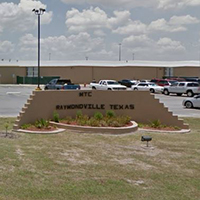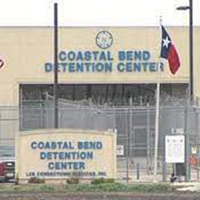Need an Immigration Bail Bond in Minnesota? Call Speedy Today
At Speedy Immigration Bail Bonds, we provide fast, 24/7 immigration bail bond services in Minnesota. Whether your loved one is detained in Minneapolis, St. Paul, Rochester, Duluth, or elsewhere, we act immediately to secure their release from ICE custody.
Our experienced agents are available 24/7, offering bilingual support, affordable payment options, and expedited bond processing. We understand the urgency of these situations, and we’re here to help.
What Is an Immigration Bail Bond?
An immigration bail bond allows a person detained by Immigration and Customs Enforcement (ICE) to be released while they wait for their immigration court hearings.
Types of Immigration Bonds:
- Delivery Bond: Lets the detainee return home under the condition that they attend all immigration hearings.
- Voluntary Departure Bond: Allows the detainee to leave the United States voluntarily by a specified deadline.
We specialize in delivering bonds in the fastest and most reliable way to bring your loved one home in Minnesota.
Why Choose Speedy Immigration Bail Bonds in Minnesota?
✅ 24/7 Statewide Service
We are available 24 hours a day, 7 days a week—nights, weekends, and holidays.
✅ Local and Nationwide Bond Posting
We serve all of Minnesota and can post bonds at any ICE facility nationwide.
✅ Spanish-Speaking Agents
Clear and respectful support in English and Spanish for bilingual households.
✅ Affordable Payment Plans
Flexible financing with no hidden fees and zero-interest payment options.
✅ Fast Turnaround
We understand the detention system and can post bonds quickly, often within hours.
Immigration Detention Centers Near Minnesota
While ICE doesn’t operate a long-term facility in Minnesota, detainees are held in:
- Sherburne County Jail – Elk River, MN
- Freeborn County Adult Detention Center – Albert Lea, MN
- Kandiyohi County Jail – Willmar, MN

Sherburne County Jail Services
13880 Business Center Drive NW
Elk River, MN 55330
United States
Sherburne County Jail Services

2201 23rd St. NE
Willmar, MN 56201
United States

411 S. Broadway Avenue
Albert Lea, MN 56007
United States
Transfers may also occur to neighboring states:
- Polk County Jail – Des Moines, IA
- McHenry County Jail – Woodstock, IL
Our agents are familiar with each of these facilities and act fast to process your loved one’s bond.
How the Immigration Bail Bond Process Works in Minnesota
Here’s how Speedy Immigration Bail Bonds handles your case:
A[ICE Arrest] --> B[Detained in Facility]
B --> C[Bond Eligibility Determined]
C --> D[Contact Speedy Immigration Bail Bonds]
D --> E[Submit Required Documents]
E --> F[Bond Payment Processed]
F --> G[Bond Is Posted]
G --> H[Detainee Released]
H --> I[Attend Immigration Hearings]
What You Need to Post an Immigration Bond in Minnesota
To begin the process, gather the following:
- Government-issued ID (valid and unexpired)
- Social Security card
- Proof of address (utility bill, lease, etc.)
- Proof of legal status (U.S. citizen or green card)
- Detainee’s A-number, full name, and date of birth
We’ll guide you through the rest—step by step.
How Much Does an Immigration Bond Cost in Minnesota?
ICE or a judge sets the cost of an immigration bond, and it depends on:
- Criminal record
- Flight risk
- Employment status
- Ties to the U.S.
- Immigration history
Typical Bond Amounts:
- Low-risk cases: Starting at $1,500
- Average cases: $5,000–$10,000
- High-risk cases: $15,000–$25,000+
We offer affordable financing, including low down payments and no-interest plans.
Need Legal Help? We’ve Got You Covered
While we don’t provide legal services directly, we refer clients to top-rated immigration attorneys in Minnesota for:
- Deportation defense
- Bond hearings
- Asylum applications
- Green cards and family petitions
We’ll connect you with a lawyer right away if needed.
Frequently Asked Questions (FAQs)
How quickly can someone be released after bond is posted?
Usually within 24 to 48 hours, depending on the detention facility.
Who can post an immigration bond?
Only a U.S. citizen or a lawful permanent resident can post bond.
What if the detainee is transferred out of state?
We post nationwide bonds and can secure their release regardless of location.
Call Now – Get Help Fast from Speedy Immigration Bail Bonds
Don’t wait. Every moment matters when your loved one is in detention. Trust Speedy Immigration Bail Bonds to act fast, treat you with respect, and get results.
📞 24/7 Help Line: 888-240-2663
🌐 Visit Us: https://speedy-immigration.com/
📍 Serving Minneapolis, St. Paul, Rochester, Duluth, Bloomington, and every Detention center in the USA
Speedy Immigration Bail Bonds – Fast. Professional. Compassionate.
Reuniting Minnesota families one bond at a time.





























